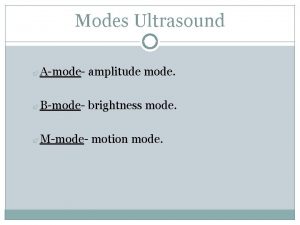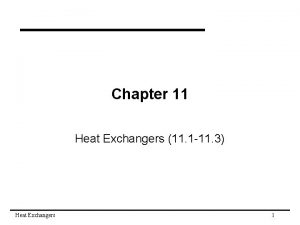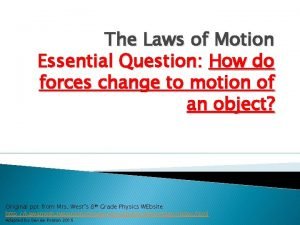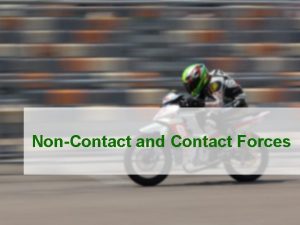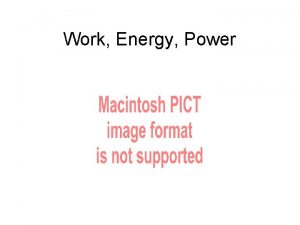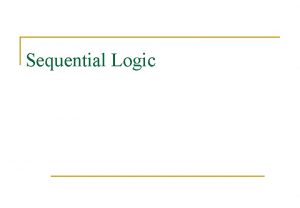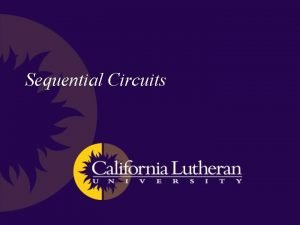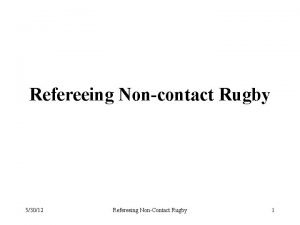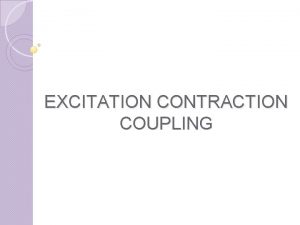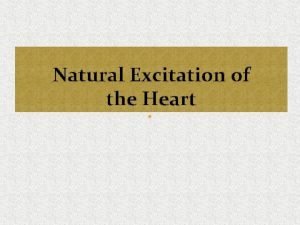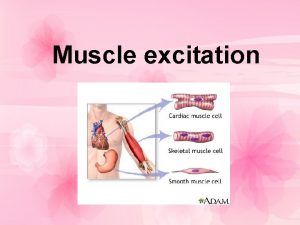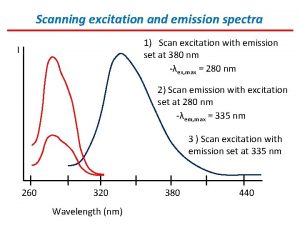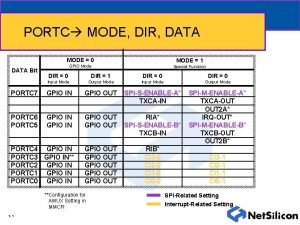Noncontact mode excitation of small structures in air














- Slides: 14

Non-contact mode excitation of small structures in air using ultrasound radiation force Acoustical Society of America Meeting: May 17, 2005 Thomas M. Huber, John Purdham Physics Department, Gustavus Adolphus College Mostafa Fatemi, Randy Kinnick, James Greenleaf Ultrasound Research Laboratory, Mayo Clinic and Foundation

Introduction § Background material on ultrasound stimulated excitation § Study of different devices § MEMS mirror § Hard Drive HGA Suspension § MEMS Gyroscope § Conclusions

Ultrasound Stimulated Vibrometry § Pair of ultrasound beams directed at object § One ultrasound transducer differed from other by audio-range frequency § Difference frequency between ultrasound beams produces radiation force that causes vibration of object § Vibrations were detected using a Polytec laser Doppler vibrometer § In some experiments, comparison of ultrasound excitation and mechanical shaker

Experiment Details Confocal ultrasound transducer used § 600 k. Hz broadband (>100 k. Hz bandwidth) § 30 mm focal length; 1 mm focus spot size § Confocal (concentric elements with different frequencies) § Mounted on 3 -D translation stage § Inner disk fixed at 500 k. Hz § Outer ring sweeps 501 – 520 k. Hz § Difference frequency of 1 k. Hz – 20 k. Hz Caused excitation of object

Device Tested: 2 -d MEMS Mirror § § § Manufactured by Applied MEMS Mirror is 3 mm on Side - Gold plated Silicon Three vibrational modes § § § X Axis torsion mode: 60 Hz Z Axis torsion mode: 829 Hz Transverse mode (forward/back): 329 Hz (incidental – not used for operation of mirror)

Selective Ultrasound Excitation of MEMS Mirror § § § Ultrasound focus ellipse about 1 x 1. 5 mm Focus position can be moved horizontally or vertically § § § Changing transducer position allows selective excitation Upper figure: All modes present when focus near center of mirror. § Red line shows excitation using mechanical shaker. Middle: X-torsional mode increases when ultrasound focus near top of mirror. Bottom: Z-Torsional mode increases when focus near right edge

Selective Ultrasound Excitation of MEMS Mirror § § § X-Torsional mode peaks when focus near top/bottom of mirror Transverse mode decreases as transducer moved vertically (smaller fraction of beam on mirror) Ratio of amplitudes of X-Torsional to Transverse modes changes by over factor of 10 x as vertical position is varied

Hard Drive HGA Suspension § HGA (Head Gimbal Assembly) suspension holds heads as they fly over the disk § Leading manufacturer: Hutchinson Technology, in Hutchinson, MN § Length about 5 -10 mm, max. width about 2 mm, thickness of 25 -100 μm § The suspensions are engineered to have specific vibrational modes. § Quality control involves measuring mode frequencies and deflection shapes (using mechanical shaker for excitation and vibrometer for measurement)

Ultrasound excitation of HGA Suspension § Goal: To determine whether vibrational modes of suspension can be excited using ultrasound radiation force § HGA Suspension was clamped and simply supported § Confocal ultrasound transducer used to excite modes from 1 k. Hz to 50 k. Hz § Vibrometer measured resonance frequencies and deflection shapes at several ultrasound focus positions § Brüel & Kjær mechanical shaker used for comparison

Photos of Setup

Results for focused ultrasound excitation: HGA Suspension § § Interference between ultrasound frequencies between 501 – 520 k. Hz and 500 k. Hz Ultrasound focus (ellipse of about 1 mm by 1. 5 mm) centered on suspension (red curve) and towards edge of suspension (blue curve) Demonstrates feasibility of noncontact excitation using ultrasound radiation force. Selective Excitation: For ultrasound focus towards the edge (blue curve), large increase in amplitude of torsional modes at 6, 10, 13 and 15 k. Hz relative to the transverse modes at 2, 7, and 16 k. Hz.

Mode shapes determined using ultrasound excitation 2. 0 k. Hz 6. 0 k. Hz 7. 2 k. Hz (Click on each image for animation of deflection shape) 10. 8 k. Hz

Results for MEMS Gyroscope § Analog Devices MEMS Gyroscope § Pair of Test Masses ¾ mm square separated by 1. 5 mm § 14 k. Hz resonance frequency Variation of Ultrasound Transducer Position Can Produce Selective Excitation of Masses Mechanical Shaker Shakes Entire Structure

Conclusions Ultrasound excitation shown to be feasible for modal analysis § Allows excitation of resonances from below 1 k. Hz to over 40 k. Hz § Parts such as MEMS mirror, gyroscope and HGA suspension § Completely non-contact for both excitation and measurement § Selective excitation of torsional/transverse modes § Selective excitation by moving ultrasound focus point § Similar selective excitation using phase shift between two transducers § Special thanks to § Hutchinson Technology § Applied MEMS § Analog Devices § Polytec Incorporated
 Bmode
Bmode Air resistance non contact force
Air resistance non contact force Is gravity a contact force
Is gravity a contact force Small air to air heat exchanger
Small air to air heat exchanger Air higroskopis air kapiler dan air gravitasi
Air higroskopis air kapiler dan air gravitasi Non-contact forces portfolio
Non-contact forces portfolio What are some contact forces and some noncontact forces?
What are some contact forces and some noncontact forces? Noncontact force examples
Noncontact force examples Non contact force examples
Non contact force examples Is upthrust a contact or noncontact force
Is upthrust a contact or noncontact force Whats a noncontact force
Whats a noncontact force Buoyancy force contact or noncontact
Buoyancy force contact or noncontact Excitation table
Excitation table T flip flop truth table
T flip flop truth table Jk ff excitation table
Jk ff excitation table
